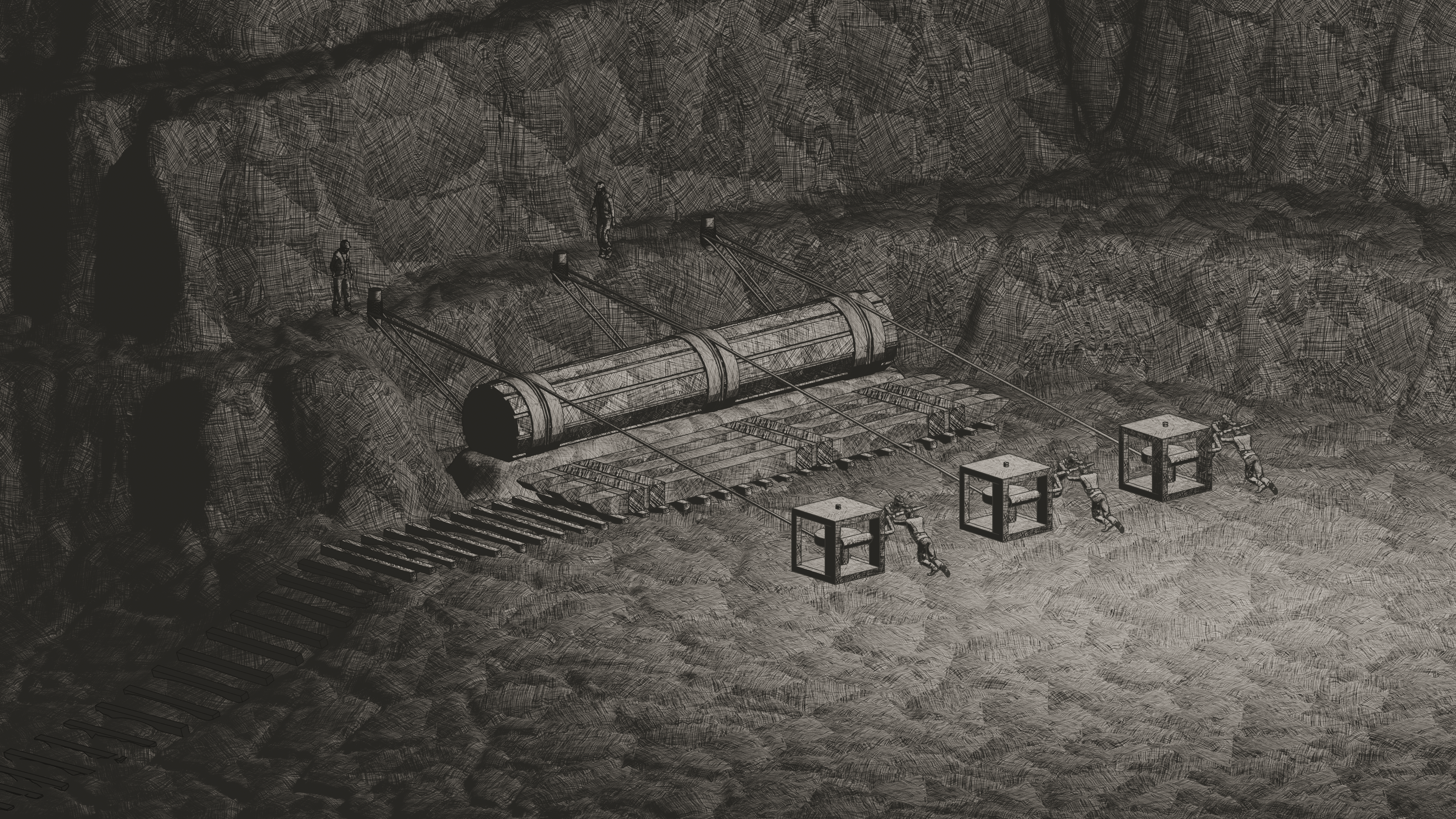Horizontal excavated shafts:
Rolling onto sledge
Ancient Egyptians used a trenching technique to extract stone objects, creating a trench around the object to free it from its parent rock. Levers and sandbanks aided in rotating and moving these heavy objects out of the trench. In the Renaissance, Francesco's winches instead of levers could employed to rotate the element out of the trench, making rotation smoother. The use of sand as a leveling layer allowed for better movement on non-cylindrical elements. Ropes were employed to prevent overextension during rolling.

Chersiphron's wooden frame provided another transportation method but was limited to short columns and required wider pathways. Both carts and sledges had their advantages; carts were suitable for straight paths, while sledges offered better maneuverability. Friction on sledges was beneficial on descents, acting as a safety mechanism. They were especially useful in narrow city streets and quarries.
Animation
Ultimately, the choice of transportation method depended on the specific situation, with architects selecting the most efficient option. Columns were then attached to draft animals for an overland journey to harbors or riverports.